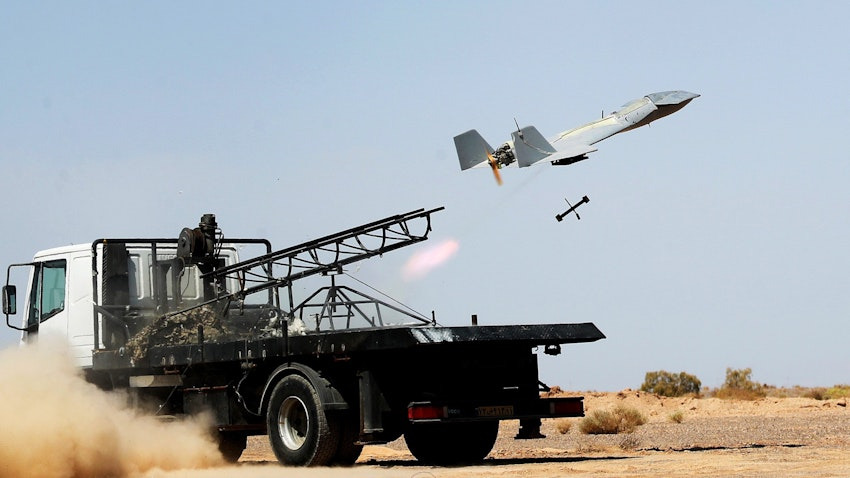Iranian drones have successfully engaged ground, naval and aerial targets during large-scale drills, which began on October 3.
More than 200 drones are taking part in the ongoing Iranian drills, codenamed “Artesh,” which are taking place in the Persian Gulf and Gulf of Oman.
Brigadier General Alireza Sheikh, a spokesman for the drills, said that the Omid anti-radar suicide drone had successful detected its target during the drills. The specifications and capabilities of the drone, which was unveiled last year, are unknown.
The Arash-2 suicide drone also hit ground and naval targets, according to the spokesman. The Arash-2 has a range of 2,000 kilometers and is guided by a satellite-aided inertial navigation system. Last year, Iran showcased new versions of the drone equipped with TV and infrared seekers.
Iranian media released footage showing an Arash-2 suicide drone scoring a direct hit against a target ship during the drills.
In addition, the commander of the Iranian Army’s Air Defense Force Brigadier General Alireza Sabahi Fard said that a combat drone successfully intercepted a target drone with a missile during the drills.
The interception was carried out by a Karrar drone armed with a modified infrared-homing missile from an AD-08 Majid air defense system, according to footage that was released by Iranian media.
The Karrar was developed based on the design of the American-made Beechcraft MQM-107 Streaker target drone. The jet-powered drone has a top speed of 900 kilometers per hour and a combat range of up to 500 kilometers. The AD-08 missile has a range of up to eight kilometers when launched from the ground. The range is likely more when launched from air.
It’s worth noting that the Iranian military unveiled a new electronic-warfare drone, the Kaman-19, on the first day of the large-scale drills.
Iran expanded and improved its drone fleet in recent years in a bid to increase its defense capabilities and to boost its military deterrence.
Tehran was repeatedly accused of supplying advanced drones to its allies in the Middle East for use against regional foes as well as to Russia for use in the special military operation in Ukraine. However, it maintains that its drone program is purely defensive.




